
Do you have a question about the Lincoln Electric MIG-PAK 15 and is the answer not in the manual?
| Type | MIG Welder |
|---|---|
| Input Current | 20A |
| Duty Cycle | 20% at 90A |
| Output Current Range | 30 - 140 A |
| Welding Thickness | Up to 3/16 in. |
| Wire Feed Speed | 50-300 IPM |
| Wire Size Capacity | 0.025 - 0.035 in. (0.6 - 0.9 mm) |
Guidelines for safe handling of electrical components and preventing shock during operation and maintenance.
Safety measures to protect eyes and skin from arc rays, including proper use of shields and protective clothing.
Information on potential health effects of electric and magnetic fields and procedures to minimize exposure.
Precautions to prevent fire and explosion caused by welding sparks and flammable materials.
Critical safety information regarding electric shock and necessary protective measures.
Information on the dangers of welding fumes and gases and required safety practices.
Safety instructions for handling compressed gas cylinders to prevent damage and explosion.
Overview of the MIG-PAK 15's features, design, capabilities, and intended applications.
Instructions for selecting a suitable operating location and ensuring proper machine placement and stability.
Procedures for connecting work clamp, work cable, and routing cables for proper welder setup.
Steps for installing the welding gun, connecting its cable, and trigger leads to the MIG-PAK.
Instructions for connecting shielding gas and primary power input, including dual voltage reconnection.
Essential safety warnings and precautions to observe before operating the MIG-PAK 15.
Details on the machine's welding performance, recommended processes (GMAW, FCAW), and materials.
Explanation of the MIG-PAK 15's controls, settings, and key design features.
Step-by-step instructions for loading wire and adjusting the drive roll for optimal feeding.
Explanation of the arc welding circuit, its components, and current flow principles.
Description and illustration of the FCAW welding arc process and its shielding gas generation.
Explanation of the GMAW welding arc process, highlighting the need for shielding gas and arc characteristics.
Criteria for selecting between GMAW and FCAW processes based on job requirements and user preferences.
Information on common metals, their identification, and common welding joint types and positions.
Detailed instructions and techniques for performing butt welds, including penetration and speed considerations.
Instructions for fillet welds and vertical welding (up/down), emphasizing proper electrode angle and speed.
Guidance on maintaining correct electrical stickout (ESO) and welding speed for quality welds.
Guide to identifying and correcting common weld defects like porosity, spatter, and poor penetration.
List and descriptions of optional accessory kits for gas regulation, wire feeding, and conversion.
Instructions for converting the MIG-PAK for Innershield (FCAW) welding using specific kits.
Essential safety warnings and precautions before performing any maintenance on the MIG-PAK.
Routine maintenance tasks for the power source, wire feed system, fan motor, and reel spindle.
Procedures for cleaning the gun cable, contact tips, nozzles, and replacing internal components.
Step-by-step instructions for changing the drive roll and replacing the wire liner, including safety warnings.
Guide to identifying and correcting common weld appearance defects like porosity and poor bead quality.
Steps for diagnosing and resolving common operational problems such as gas flow issues and arc instability.
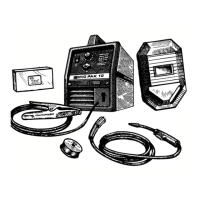
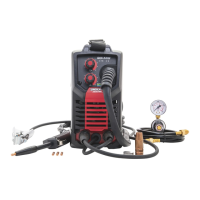



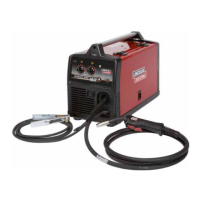

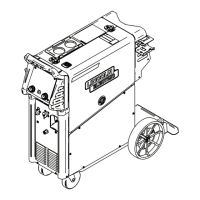

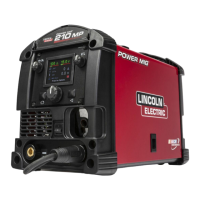
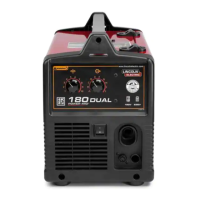
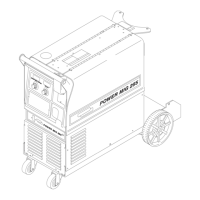
